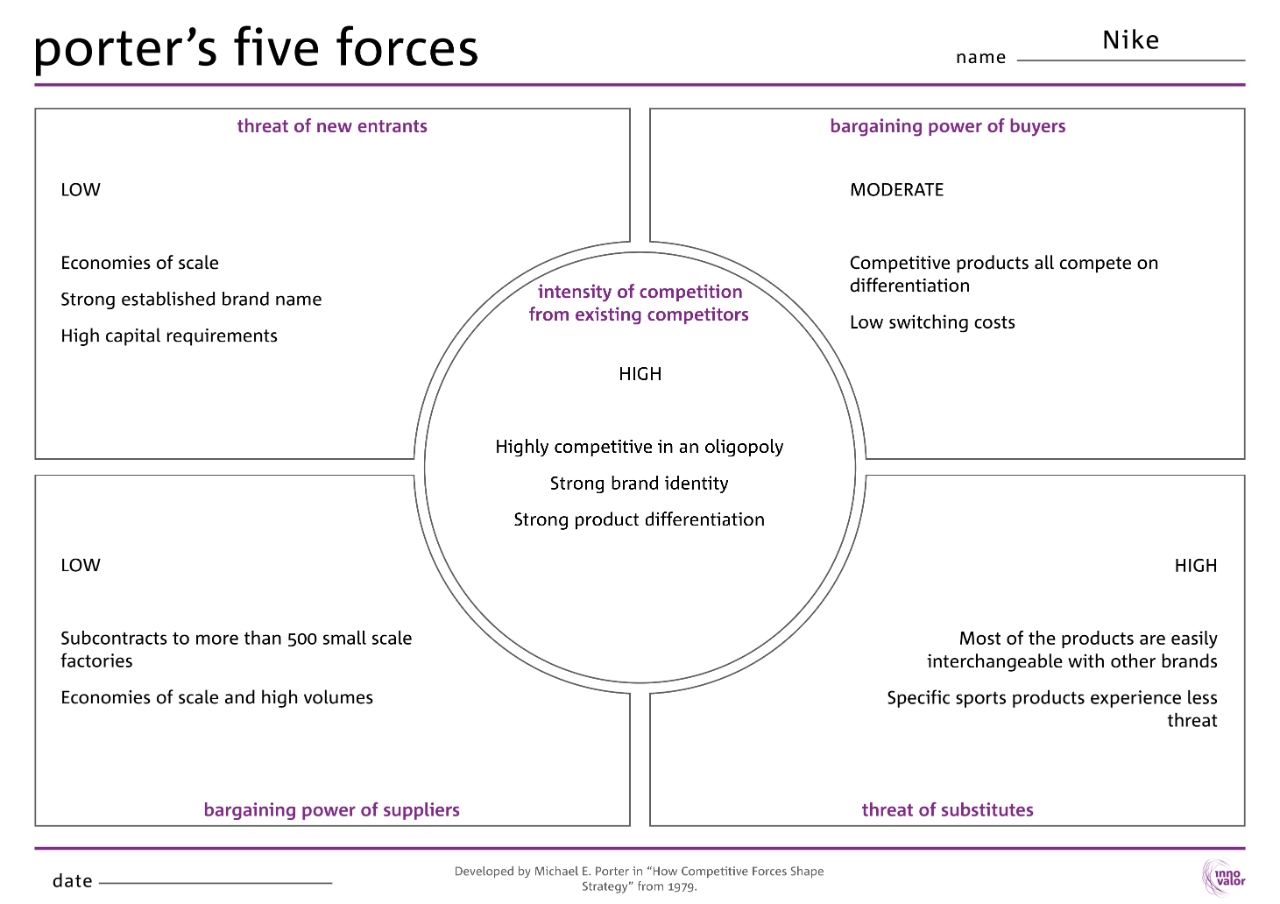Porter’s Five Forces

Tips for use
You can do Porter’s Five Forces by yourself, but it is more effective if done by a group of people, for example with colleagues.
Use Porter’s Five Forces to make a large printout and use this in a brainstorm. Use sticky notes to write things on the template, in this way it is easy to add or change things and keep the conversation going.
Have a look at the example as well, learn about the practical application of this tool through Porter’s Five Forces of Nike.
How to use
Porter’s Five Forces show that there are five important forces that determine the competitive power of your business. Write down high, moderate or low on Porter’s Five Forces template for each of the following forces.
Intensity of competition from existing competitors
Identify the existing competitors of your business. Write down their names and the size of their businesses. Estimate how heavy the competition is.
- The intensity is high if you have many competitors with a similar product or service. Your business will likely have little power in the market. Suppliers and buyers can easily go somewhere else.
- The intensity is low if there is no one else that offers what you offer. You have great power in the market. Buyers and suppliers have nowhere else to go.
Threat of substitutes
Substitute products or services offer an alternative for your offering. Write down those products or services that can be an alternative for your customers.
- The threat is high if there are many substitutes. It is easy for buyers to find a different solution than your offering.
- The threat is low if there is no alternative for your product. Your business has tremendous power since customers cannot find an alternative.
Threat of new entrants
New entrants are businesses that want to enter your market. Your power is affected by the ability of others to enter the market. New competitors can easily enter your market when there are low entry costs, few economies of scale, no knowledge-intensity and little protection of key technologies. Write down the potential new entrants and the entry barriers of your market.
- The threat is high if there are no or a few entrance barriers. It will be easy for new businesses to start competing in your market.
- The threat is low if there are many and durable entrance barriers. You can maintain your position on the market and take advantage of it.
Bargaining power of suppliers
High bargaining power of suppliers will result in a higher price for resources for your product. The bargaining power of suppliers is determined by the number of suppliers in the market. Write down on which suppliers you depend for your resources and how many other suppliers could offer the same resources. Also describe if it is easy to switch suppliers.
- The bargaining power is high if there are few or just one supplier. That supplier has large bargaining power and the power to determine its price.
- The bargaining power is low if there are many suppliers on the market. An individual supplier has little bargaining power, and no influence on the price.
Bargaining power of buyers
High bargaining power of buyers means that it is easy for buyers to drive down the price of your product. The bargaining power of buyers is determined by the number of buyers in your market. Write down how many buyers there are in your market. Also describe if you depend on your buyers or if they depend on you.
- The bargaining power is high if there are a few buyers. Those buyers have large bargaining power and can easily drive down the price. Your business depends on these buyers.
The bargaining power is low if there are many buyers. An individual buyer has little bargaining power and cannot drive down the price.